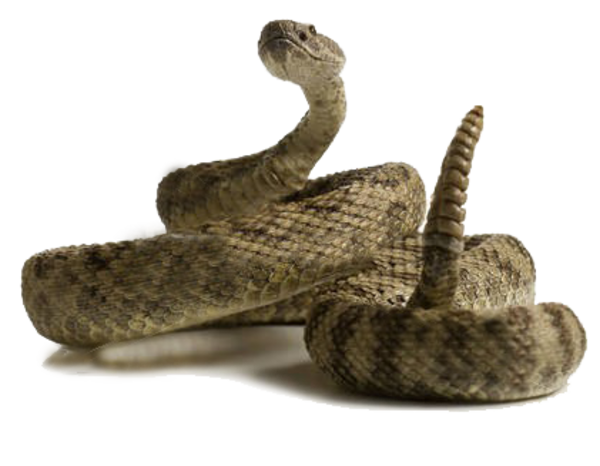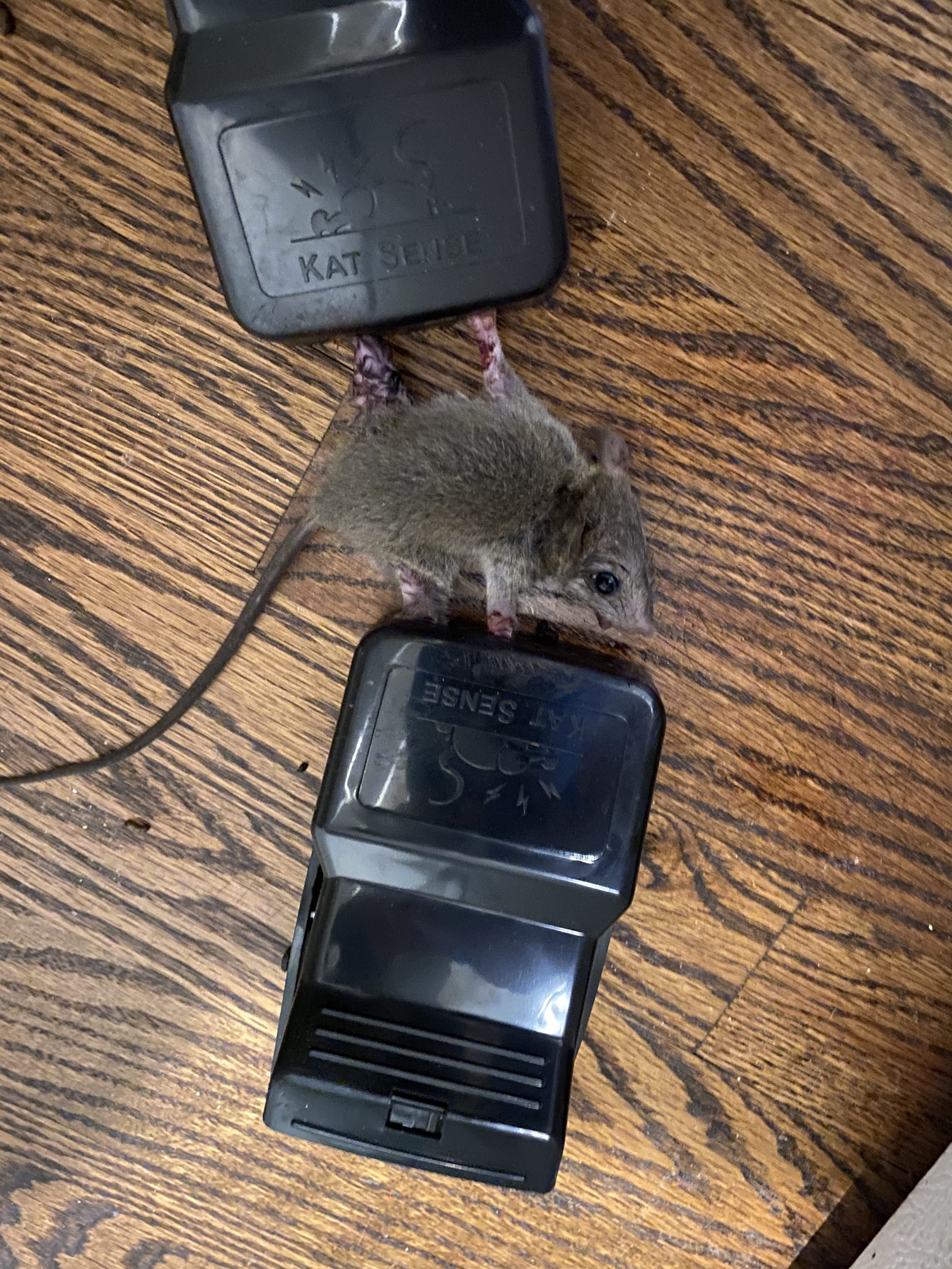Rodent pest control information about burrowing , droppings, infestations reproduction and diseases
What sounds can a rat hear?
Humans can hear sounds from about 16 to 20,000 Hz (20 kHz)*. Anything above 20 kHz is called "ultrasound," because those sounds are higher than we can hear. Anything below 20 Hz is called infrasound -- elephants communicate over miles with low, rumbling infrasound (more).
Rats can hear ultrasound: the range of the rat's hearing is around 200 Hz to 80 or 90 kHz . There is a whole world of high frequency sound out there that rats can hear that we cannot, a perceptual difference that humans tend to forget (Milligan et al. 1993, Sales et al. 1998).
For example, when a human gently rubs thumb and forefinger together, we hear nothing. But this movement makes a scratchy sound in the ultrasonic range. Wire cages make a lot of ultrasonic noise in addition to audible noise when rats move around in them.
Here are some of the frequency ranges that are perceptible to other species:
Dogs: up to 40,000 Hz
Cats: 100 to 60,000 Hz
Bats: 1,000 to 100,000 Hz
Dolphins: up to 150,000 Hz
More information about rat elimination from rats exterminators on removing rats
Wait How fast ?
Postpartum conception is a subject of great interest to rat owners. For example, some new rat owners are surprised by an unexpected litter. Their presumed same-sex pair of rats is actually a male-female pair! Such owners wish to know how quickly they should separate their rats to avoid another litter.
How soon can a female conceive another litter after giving birth?
The answer is soon! Females go into heat between about 10 and 24 hours after giving birth. Specifically, females go into heat on the first evening that is at least 10 hours after giving birth. This phenomenon of coming into heat shortly after giving birth is called postpartum estrus.
However, eggs fertilized during a female rat's postpartum estrus may not implant right away, due to a lactation-induced delay. Female rats that conceive during their postpartum estrus may therefore go through an extended gestation of about 32 days (+-1 day) rather than the normal 21-22 days. To the rat owner, it looks like the female conceived about 10 days after giving birth, when in fact she conceived shortly after birth but simply had a longer pregnancy than normal.
After the postpartum estrus, the female rat does not come into heat again until after the weaning of her litter. This estrus is called the postweaning estrus and it occurs about 29 days after a female rat gives birth.
Rats are basically blind
The rat's world is very blurry. Visual acuity is measured in cycles per degree (cpd), a measurement of the number of lines that can be seen as distinct within a degree of the visual field. Acuity of humans is about 30 cpd, normally pigmented rats is 1 cpd, and 0.5 for albino rats. If we translate Prusky's cpd measurements into vision chart measurements, a normally pigmented rat has about 20/600 vision, and an albino rat has about 20/1200 vision.
Depth of focus: Combined with poor visual acuity, rats have an enormous depth of focus. Depth of focus is the range of distances at which an object is in equivalent focus for an unaccomodated eye. In humans, the depth of focus is from 2.3 meters to infinity. In rats, the depth of focus is from 7 centimeters to infinity, which may be due to the small size of the rat's eye and its poor acuity
Rats have eyes on either side of their heads. This allows for a large field of vision but less binocular vision.
Specifically, the position of the eyes on the head represents a tradeoff between field of vision and binocular vision, which is used in binocular depth perception. Laterally-placed eyes (on either side of the head) scan separate portions of the world, and the field of vision at any one point of time is enormous. Because this position allows the animal to detect threats from many directions at once, it is most common in prey animals (think eyes in the front ready to hunt eyes on the side run and hide.).
Eyes placed on the front of the head have much more overlap. This means a smaller visual field, but more binocular vision. Depth perception is useful for predators who need to coordinate their movements to capture prey, so predators often have forward-facing eyes (think raptors, cats, dogs etc.).
Here's how binocular vision provides depth perception. Each eye sees a slightly different image. The closer an object is, the more different it will look to either eye. The brain processes the disparity between the two images and this provides a sense of depth. Also, focusing on a nearby object makes the eyes converge slightly, and the brain uses information from the eye muscles to calculate how far away the object must be. So, the move overlap between the visual fields of the two eyes, the more binocular depth perception.
Rats don't have as much overlap as we do: their field of binocular vision is only about 76º, while ours is about 105º. Therefore, rats have a larger field of vision than we do but poorer binocular depth perception.
Do wild rats carry rabies?
Are wild rats ever found to carry rabies?
Very few rats infected with rabies have ever been found in the United States. The literature on rodent rabies in the United States found that during the 18-year period of 1953 and 1970, a small number of rabid rats (39 rats) were found in the United States. The numbers were extremely small: only 11 rabid rats were found in the U.S. during the three year period of 1953-1955. The number of rabid rats declined during the period of time covered by the review, and by the three year period of 1968-1970 only 2 rats were found to be rabid. This decline in the number of rabid rats is probably due to an improvement in diagnostic techniques which led to fewer false positives. In Thailand, 4.7% of Norway rats (9 rats out of 192) were found to be carrying rabies.
However, no rats were found to be infected with rabies in surveys of wild rat populations.
Have rats ever caused rabies in humans?
Rats and other small rodents have never caused a single case of human rabies in the United States (CDC).
A very few cases of humans infected with rabies by rats have been reported in countries such as Poland, Israel, Thailand and Surinam. In Poland, out of 9,998 cases of human rabies from 1990 to 1994, four were caused by rats (0.04%), while the vast majority were caused by foxes (Zmudziñski and Smreczak 1995, described in Wincewicz 2002). In Israel, one case of human rabies was caused by a bite from a small rodent -- possibly a rat or mouse (Gdalevich et al. 2000). In Thailand, out of 7,000 human rabies cases reported each year, 1% are caused by rat bites (Kamoltham et al. 2002). The majority of rabies cases in Thailand are caused by dogs (86.3%) (Pancharoen et al. 2001). An outbreak of paralytic rabies in children in Surinam was attributed to rat bites (Verlinde et al 1975).
Why is rabies so rare in rats?
The answer is unclear. Currently, it is presumed that rats are so small that they almost never survive the attack of a larger rabid animal, like a raccoon, skunk, or fox.
Do wild rats carry the plague?
The plague bacterium is maintained at low, steady levels (called enzootic infection) in just a few species of rodent hosts, such as Microtus spp. (voles), and Peromyscus spp. (deer mice, white-footed mice, Texas mice, cotton mice etc.). Some populations of these species are resistant to the plague and therefore form a reservoir from which outbreaks can occur in other species. Other non-rodent species have been found serologically positive to the plague as well (e.g. bears, bobcats, badgers, fox, ringtails, skunks, mountain lion, deer, African elephant, African buffalo).
The plague bacterium, Yersinia pestis, is transmitted from one animal to another by the flea. An outbreak occurs when infected fleas change host species and unload large numbers of plague bacteria onto a new, less resistant host species. In the United States, these new hosts serve as amplifying (epizootic) hosts, and they include rock squirrels, California ground squirrels, antelope ground squirrels, prairie dogs, chipmunks, woodrats, and less resistant populations of Microtus and Peromyscus. In urban areas, these hosts include the ship rat (Rattus rattus) and the Norway rat. Different species of flea may become involved in an outbreak, including the rat flea (Xenopsylla cheopis), the squirrel flea (Oropsylla montana), and the human flea (Pulex irritans). The plague is therefore carried by many different rodent species. However the rat, because it lives in close proximity to humans, has been most frequently associated with plague outbreaks in people.
Rats are not resistant to the plague, so an outbreak of the plague in rats is associated with large rat die-offs. Infected rats usually die within a few days of a high-grade bacteremia. The infected fleas do not die, however, and the rat's death forces the infected fleas to find other hosts: other rats, or humans.
Humans are therefore at risk of contracting the plague if they live near or handle plague-infected rats or their recently dead bodies, one of the early observers of plague transmission, observed that handling a rat which has been dead for more than 24 hours did not lead to infection, because the infected fleas had already left the body.
The most famous outbreak of the plague was the Black Death of 1330-1352. This epidemic was spread by the ship rat and its flea, which spread the plague to humans throughout Asia and Europe. The last plague outbreak in the United States was in 1924-1925 in Los Angeles. Since then, human plague has been found as scattered cases in rural areas in the western United States (10-15 cases per year) (Levy 1999). Currently, plague-infected rodents are found in many parts of the world (CDC), but transmission to humans is relatively rare (1,000-3,000 cases per year worldwide). Today, the plague is 100% treatable with antibiotics.
ratbehavior.org
ABOUT GARLAND
Garland is a city in the Dallas-Fort Worth metroplex in the U.S. state of Texas. It is located in Dallas and Collin counties, and is part of the Dallas-Fort Worth-Arlington metropolitan statistical area. The city has a population of about 239,000 people.
Garland is known for its diverse economy, with a mix of manufacturing, retail, and service industries. The city is home to a number of large corporations, including Neiman Marcus, Frito-Lay, and Texas Instruments. Garland also has a strong arts and culture scene, with a number of museums and galleries, as well as a number of parks and recreational facilities.
The city is located just northeast of Dallas, and is easily accessible via major highways and public transportation. It is a popular place to live due to its proximity to Dallas and its affordable housing prices.












































